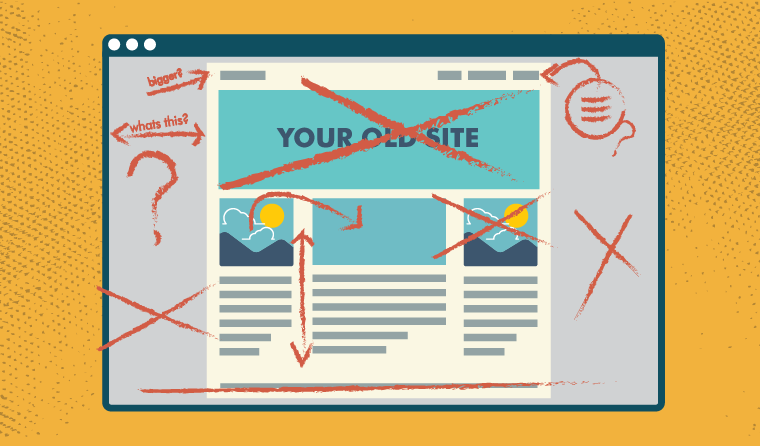5 Steps to Prepare for a Website Redesign

Congratulations, you’re getting a new website! A site redesign is exciting, but it also takes a lot of work. If you’ve partnered with a web company, there are a few steps you can take on your end to ensure that your project runs smoothly from start to finish.
Follow these five tips to prepare for a redesign, and you’ll wind up with a shiny, new site that you love and that meets your business goals.
1. Determine Your Budget
Before you begin your rebuild, you absolutely need to know your budget, especially if you’re working with a web company. You’ll need to understand what you can afford and prepare for additional costs like hosting, domain registration, plugins, and font licenses. Remember: fantastic photography and engaging video can make the difference in a ho-hum and a wow website. Take those costs into consideration as well.
2. Know Your Schedule – And Be Realistic
If you need the site live by a certain date, let your web company know. You should also note any planned trips or time out of the office (trade show in Vegas, anyone?) that could affect approvals or deadlines. You have to meet your deadlines to keeping your redesign on track; if things take multiple rounds of approvals or deadlines are missed, you’ll see your ideal go live in the rear view mirror.
3. Identify Areas of Improvement on Your Current Site
The whole point of a redesign is to make your website better, and you can’t do that if you don’t know what’s wrong with it in the first place. Include key stakeholders in your early planning meetings and then narrow your project team to a small, nimble group. Come to any initial phone calls or meetings with a list of the issues you’d like to address during your rebuild. These can include anything from user experience issues to branding refreshes. Identifying areas for improvement is one of the most important steps in ensuring that you’re satisfied with your new site.
4. Know Your Target Audience
Identifying your target audiences will help ensure that your new site effectively communicates to potential customers and drives them through the conversion funnel. Creating personas is a useful exercise here, but simply sharing any data or insights you have about your customers will help your web design team understand what the site needs to communicate and determine how that communication will happen.
5. Determine Your Goals and Conversions
What measurable goals do you have for your site? Knowing what you want visitors to do when they arrive at your site, whether it’s making a phone call, completing a form, or viewing a specific piece of content, will help your web design team develop a design and content structure that supports these goals. This will, in turn, make your site an effective marketing tool for your business.
Have any questions on the website redesign process? Add yours in the comments!
